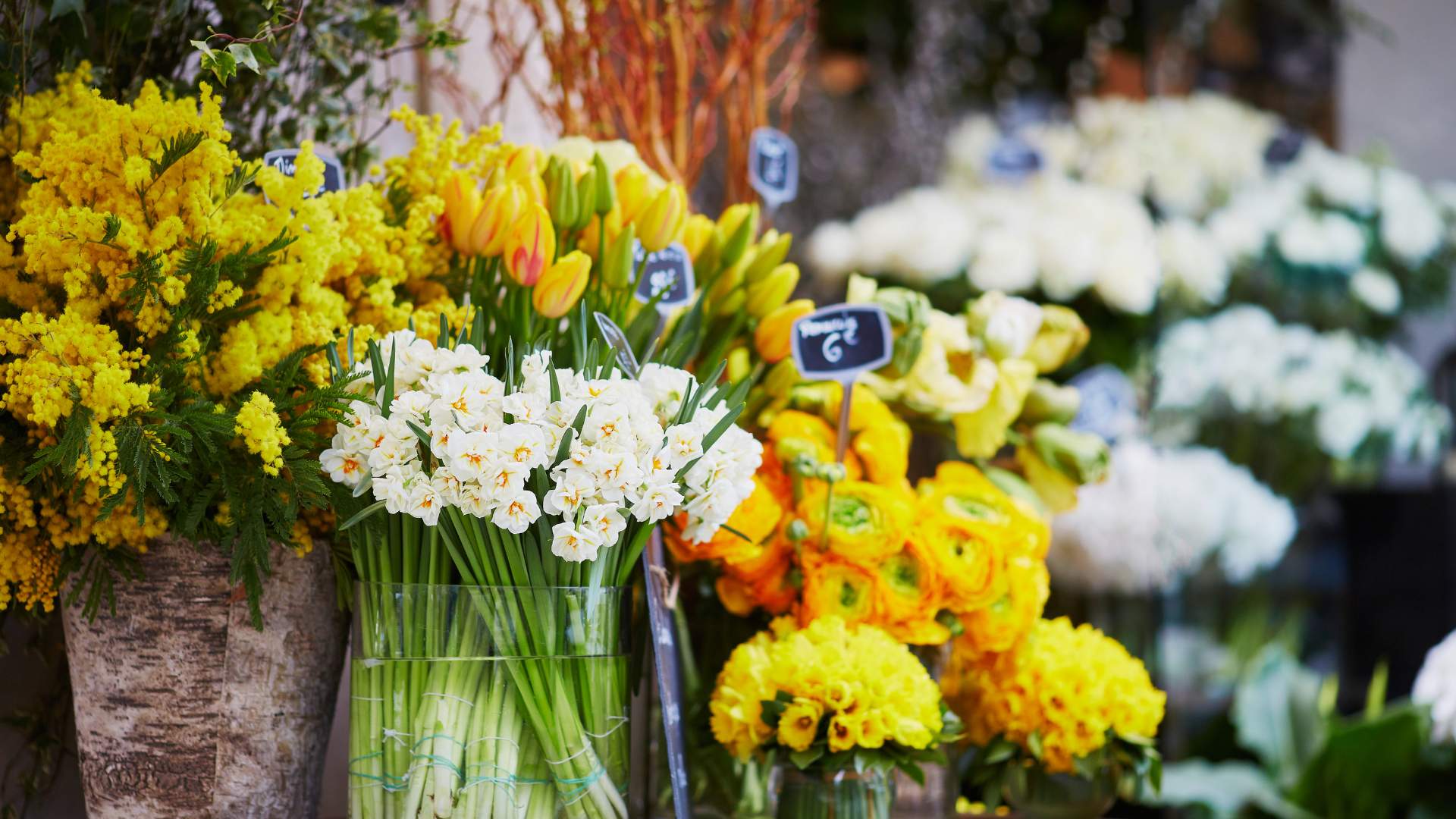Why Give Lily of the Valley on Labor Day: A Tradition Rooted in History
Lily of the valley, with its delicate white bells and intoxicating fragrance, is much more than just a spring flower. For centuries, this small plant has been associated with numerous beliefs and traditions, particularly in France, where it is inseparable from Labor Day. This article explores the origins of this fascination with lily of the valley, the symbols it carries, and how it became an emblem of the May Day celebration.
From Mythological Origins to Modern Symbolization
The Celts and Plant Magic
The origins of the lily of the valley cult date back to ancient times. For the Celts, this plant was much more than just a flower. It was considered a lucky charm, capable of protecting against evil spirits and attracting prosperity. The Druids, Celtic priests, used lily of the valley in their rituals and potions, considering it a powerful talisman.
Lily of the Valley in Norse Mythology
In Norse mythology, lily of the valley was associated with Freya, goddess of love, fertility, and beauty. This association reinforced the connection between lily of the valley and the notions of fertility and renewal, recurring themes in ancient societies. Blooming in spring, lily of the valley symbolized the awakening of nature and the return of life after winter.
The Middle Ages: Between Magic and Medicine
In the Middle Ages, lily of the valley was used in the making of love potions and potions. It was believed to have the power to make one invisible and promote romantic encounters. Lovers offered each other sprigs of lily of the valley as a token of their affection. At the same time, doctors of the time used it for its diuretic and cardiac properties, although its toxicity made it a plant to be handled with caution.
The Renaissance: Lily of the Valley, Symbol of Femininity
The Renaissance marked a turning point in the perception of lily of the valley. It became a symbol of femininity and purity, associated with the Virgin Mary. This association reinforced its sacred character and linked it to notions of chastity and innocence. Lily of the valley was then often depicted in religious art as an attribute of the Virgin.
Lily of the Valley and Labor Day
The association of lily of the valley with May 1st, Labor Day, is a relatively recent tradition. In France, it is believed to have originated in the 19th century. The exact origin of this association is subject to debate, but several hypotheses have been put forward:
- A Symbol of Renewal : Blooming in spring, lily of the valley represents renewal and hope for a better life for workers. At a time when working conditions were often difficult, offering lily of the valley was a gesture of hope and solidarity.
- A Nod to Popular Traditions: Offering lily of the valley on May 1st could be a way to perpetuate the ancient rural traditions associated with this flower. Even before May 1st became Labor Day, it was already a day to celebrate spring and nature.
- A Commercial Initiative : Some historians suggest that this tradition was popularized by florists to boost sales. Regardless, selling lily of the valley on May 1st has become a common and widespread practice.
Lily of the Valley in Art and Literature
Lily of the valley has inspired many artists and writers. It features in literature, painting, and music. Its small size and delicacy make it a favorite subject for poets and painters.
- Painting : Many painters have immortalized lily of the valley in their works, depicting it in bouquets, landscapes, or as a central element of their compositions. The finesse and purity of the lily of the valley bells make it a delicate and refined subject.
- Literature : Lily of the valley has been celebrated by many poets and writers. It often symbolizes purity, love, and spring, but also melancholy and the transience of life. Victor Hugo, for example, often evokes this flower in his poems.
- Music : Lily of the valley has also inspired musicians. Melodies have been composed in its honor, and its name has been used in song titles. Its delicate fragrance and simple beauty make lily of the valley a romantic subject par excellence.
Lily of the Valley and Science
Lily of the valley has also been the subject of scientific studies. Researchers have focused on its chemical composition, medicinal properties, and role in the ecosystem.
- Chemical Composition : Lily of the valley contains many active substances, including cardiac glycosides, which can be toxic in large quantities. These compounds have powerful effects on the heart and can be used medicinally, although their use must be strictly controlled.
- Medicinal Properties : Lily of the valley has been used in traditional medicine to treat various heart disorders. However, due to its toxicity, its use is not recommended for self-medication. Modern physicians prefer safer alternatives.
- Ecological Role : Lily of the valley plays an important role in the ecosystem, particularly for pollinating insects. It contributes to the biodiversity of undergrowth and provides a valuable source of nectar for bees in spring.
Lily of the Valley Today: Between Tradition and Modernity
While the tradition of lily of the valley endures, it has evolved over time. Today, it is seen more as a symbol of spring and renewal than as a good luck charm. However, the intensive marketing of lily of the valley on May 1st raises environmental concerns.
Lily of the Valley in Botany
Lily of the valley, scientifically known as Convallaria majalis , belongs to the Asparagaceae family. This perennial herbaceous plant is characterized by its elliptical leaves and clusters of white, bell-shaped flowers.
- Natural Habitat : Lily of the valley is native to temperate regions of Europe and Asia. It thrives in cool, shady undergrowth, where it often forms vast white carpets in spring.
- Life Cycle : Lily of the valley has a well-defined life cycle. It flowers in the spring, usually in May, and then produces poisonous red berries in the summer. These berries, while attractive, are dangerous to humans and animals.
- Propagation : Lily of the valley propagates mainly by division of clumps. The seeds are also dispersed by birds, but germination is rare.
Lily of the Valley and Perfumery
The delicate scent of lily of the valley is highly prized in perfumery. It is often used as a top note in floral compositions, bringing a touch of freshness and lightness. However, faithfully reproducing the scent of lily of the valley is a real challenge for perfumers, as the molecule responsible for its fragrance is unstable.
- Perfume Extraction : To obtain lily of the valley essence, perfumers use different methods, such as enfleurage or solvent extraction. The process is complex and expensive, making lily of the valley essence particularly valuable.
- Olfactory Accords : The scent of lily of the valley is often combined with notes of rose, jasmine, violet, and white musk. These accords create balanced and harmonious compositions, perfect for spring fragrances.
- Iconic Fragrances : Many famous perfumes contain notes of lily of the valley, such as Dior's "Diorissimo" or Nina Ricci's "L'Air du Temps." These timeless fragrances capture the essence of this delicate flower.
Lily of the Valley in Regional Popular Traditions
Besides the French tradition of offering lily of the valley on May 1st, many other customs related to this flower exist in different regions of the world.
- Central Europe : In some Central European countries, lily of the valley is associated with Midsummer and summer solstice celebrations. People wear lily of the valley wreaths and participate in festivities to celebrate the beginning of summer.
- Scandinavia : In Scandinavia, lily of the valley is often associated with Mother's Day. Children pick sprigs of lily of the valley to give to their mothers, symbolizing their love and gratitude.
- Asia : In some Asian cultures, lily of the valley symbolizes purity and luck. It is often used in ceremonies and decorations to bring happiness and prosperity.
Lily of the Valley and Health
Although lily of the valley is a plant valued for its beauty, it is worth remembering that it is also toxic. All parts of it contain cardiac glycosides, substances that can have adverse effects on the heart.
- Symptoms of Poisoning : Symptoms of lily of the valley poisoning include nausea, vomiting, diarrhea, heart problems, and, in severe cases, coma. Therefore, it is crucial to handle this plant with care.
- Precautions : It is important to keep lily of the valley out of reach of children and pets, and never consume any part of the plant. If swallowed, it is imperative to consult a doctor immediately.
Lily of the valley, with its rich history and complex symbolism, continues to fascinate. From Celtic mythology to current environmental issues, this small flower has survived the centuries, retaining its charm and mysterious aura. Giving lily of the valley on May 1st is a gift of magic, poetry, and solidarity. It's a gesture that recalls ancient traditions while celebrating renewal and the hope of a better life for all.








